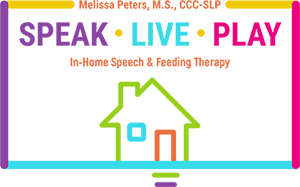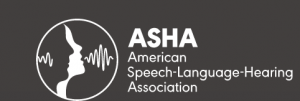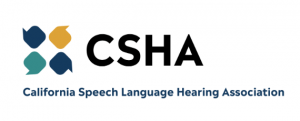Speech therapy is an important intervention carried out by professionals in order to help people suffering from speaking, swallowing, cognitive, language, and general communication impediments, whatever the causes for these impairments may be. Speak Live Play has the capacity to help with these conditions, with dysarthria being among them.
What is Dysarthria?
In simple terms, this is a condition brought about by a weakening of the muscles responsible for producing sound, therefore limiting the patient’s ability to pronounce words and produce speech effectively.
It is classified as a motor speech disorder, often caused by neurological injuries (brain damage) of varying degree brought about by a number of potential issues such as brain trauma (accidents, etc), stroke, Parkinson’s disease, multiple sclerosis, muscular dystrophy, cerebral palsy, tumors, Huntington’s disease, and more.
It has also been noted that negative reactions to certain prescription medications bring about some instances of dysarthria. In these instances, it is recommended that the patient either change their medication or stop using them completely – whichever course of action is recommended by the patient’s physician.
How Dysarthria Affects Speech and Communication
The classic signs of dysarthria are slow or slurred speech that makes it difficult for that makes it difficult for listeners to understand the patient’s speech. The specific signs of dysarthria will vary more widely depending on the underlying cause of the impediment or the type of dysarthria in question.
You should have a checkup scheduled should you notice any of the following signs or symptoms in yourself or someone close to you:
- Very fast speech that is hard to follow r understand well
- Slower speech
- Slurred speech
- Strained, nasal, or raspy voice
- Inability to regulate the volume of speech – either being too loud or too low
- Varying speech volume
- Difficulty moving facial muscles or the tongue
Professional care should be sought as soon as possible, since any cases of dysarthria and speech problems in general, patients will have a higher chance of their condition being rectified if given attention in good time.
Speech Therapy for Dysarthria Patients
Speech therapists employ various methodologies and techniques in their efforts to provide their patients with the help they need. These will be determined by the effects that the client’s dysarthria has on their speech muscles. These treatment tools will target specifically affected speech qualities that may include:
Resonance: This relates to a client’s ability to manipulate or alter the state of their vocal tract and the resonant spaces required for the production of the sounds ordinary speech calls for.
Articulation: This refers to the rate at which clients are able to enunciate and successfully reproduce the sounds and words they intend to in an understandable way.
Intensity: Causative conditions such as Parkinson’s disease will affect the patient’s hypo- or hyper-kinetic (related to the basal ganglia nerve control circuits) faculties, meaning that their voice regulation capabilities will be tampered with. They will thus be unable to regulate the volume of their speech as they normally would in accordance with the circumstances in question.
Prosody: This is a term used to refer to the normal emphasis or inflection used by speakers of sufficiently advanced language capabilities (the average native adult), which they will invoke to convey the usual gamut of linguistic devices such as humor, irony, disgust, and so forth. Some dysarthria patients will come across as robotic – speaking in monotone – which eliminates these useful nuances.
Phonation: This involves the proper voice quality and airway valves that are especially vital for singers or people who rely on their voices extensively. Therapy here will entail the retraining or strengthening of the vocal cords and the muscles that work to control or regulate their activity.
Augmentative and alternative communication techniques or devices (AAC) are somewhat auxiliary measures implemented by speech therapists to further their objectives of restoring their client’s communicative abilities where applicable. These might involve the use of smartphones, journals, gestures, sign language, speech-to-text (or text-to-speech) programs, and the like. It will all depend on what the client’s condition is and what will work best to achieve the stated objectives of the therapy effort.
Goals of Speech Therapy for Dysarthria
The goals of any speech therapist will be to help their patient restore their capability to speak normally and communicate effectively. This goes for all cases, although the results might not be the same for every patient depending on the nature of their impairment and its severity.
Therapists will consider various factors when formulating a therapy program for each patient. These need to be determined on an individual basis due to the fact that no two patients will be exactly alike in terms of their condition, what they hope to achieve, and what might be possible in their case. These are some of the factors taken into account:
Occupation
Some occupations will call for different techniques or intensities in order to best serve the interest of the patient. A singer, for example, might do better with an entirely different regimen compared to a professional rally driver. It’s all about getting to know what’s most useful to the patient within reasonable bonds.
Hobbies
What does the patient enjoy doing? Finding out what a client’s likes and dislikes are will help inform the therapist as to what therapy initiatives will best serve to restore their client’s quality of life.
Personal targets
Each patient will have their own particular targets or objectives at the start of their therapy. It will be up to the therapist to figure out what can be achieved under each patient’s unique circumstances and to formulate the best set of techniques to achieve them where possible.
Social situation
Different people come from different homes or social situations. Some people live with large groups of family and friends in close proximity while others live somewhat solitary lifestyles. Therapists will find out the situation and gear their efforts towards making it easy for the patient to readjust to their social circumstances as well as possible while also finding ways to include the client’s friends, colleagues, and family in the therapy process. The idea will be to make the process as smooth and stress-free as possible for everyone involved in the patient’s life.
Typical day-to-day routine
Therapists try to work out what the average day in a client’s life might look like or involve so that they might work on a regimen that will best allow them to live as normal a life as possible. This will involve finding out what activities the patient considers essential parts of their day, whether they have anyone in their lives that might help them with their daily activities, and all other factors that might be applicable in getting the patient back up and about as usual.
Why Choose Speak Live Play
With all the factors and considerations that need to be taken into account, it becomes clear that speech therapy needs to be a highly personalized activity if it is to achieve the best results for the client. Speak Live Play prides itself in being thoroughly professional in this regard, offering a personalized therapy service that will be aimed at restoring the patient’s quality of life regardless of the age or circumstances behind their condition.



